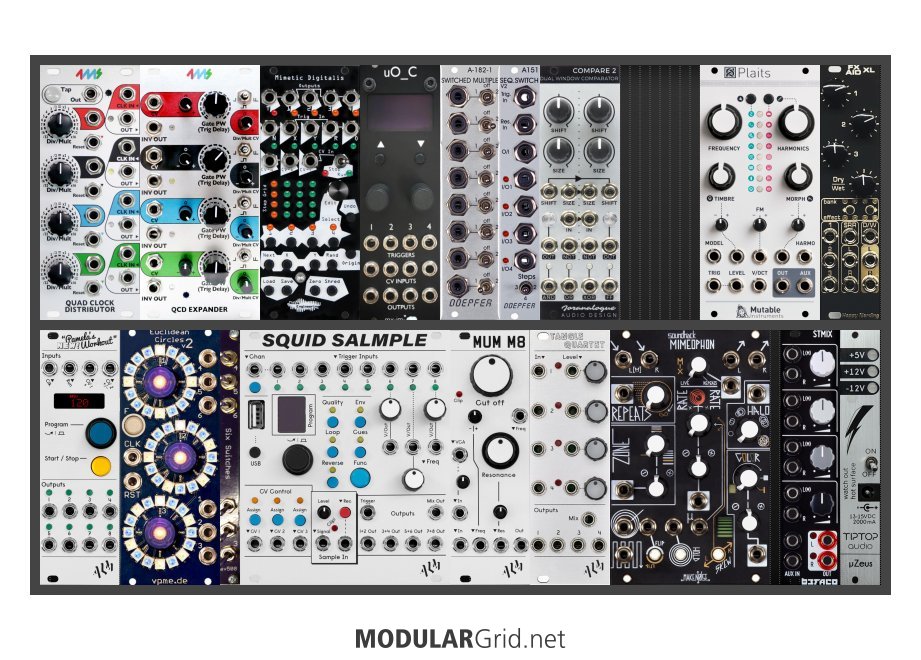Hi, I've posted previously in this subforum but once again I'm looking for opinions from experienced people. I currently have the bottom row of this rack set up and I've been having lots of fun feeding variable clock divisions into the EC and getting some funky broken beats out of it. Also feeding quantized random into the Squid channels that can handle pitch. Outside of the rack there are a Neutron and Keystep which I occasionally use. Pretty happy with the Mimeophon too.
What I'm looking for now is adding ratchet and swing on separate outputs from EC so the QCD +expander seems like a nice option, if it's an overkill I'd like to hear about other recommendations. MD looks fun and compact and I'm thinking of using it with the uO+C in part as a melodic sequencer (I'm not trying to dial in anything pre-planned, i enjoy unexpected results as i play) and in part as a CV modulation sequencer. The switches to switch between different sequences from MD, Keystep, PNW or whatever else generates a sequence of gates or pitch. Compare 2 because I've watched the tutorials and I liked the complex gate patterns it can spurt out. Finally there's Plaits as an additional voice and FX Aid XL to add some other effect besides the Mimeophon (I'd like to use shorter delay on some sounds and longer on others for example).
This is some plan in my head at least, I'd like to hear about any inconsistencies or redundancies and also what module to fit in the 8hp space left.


